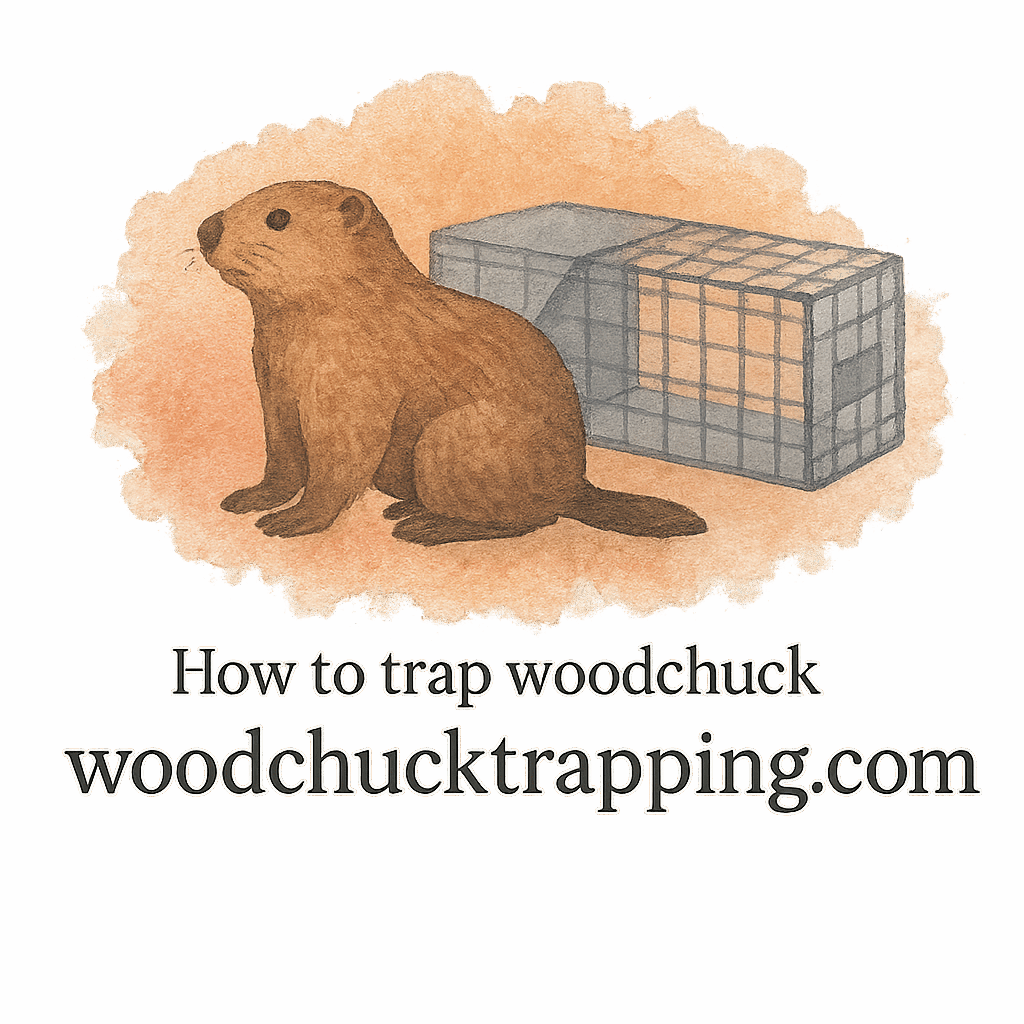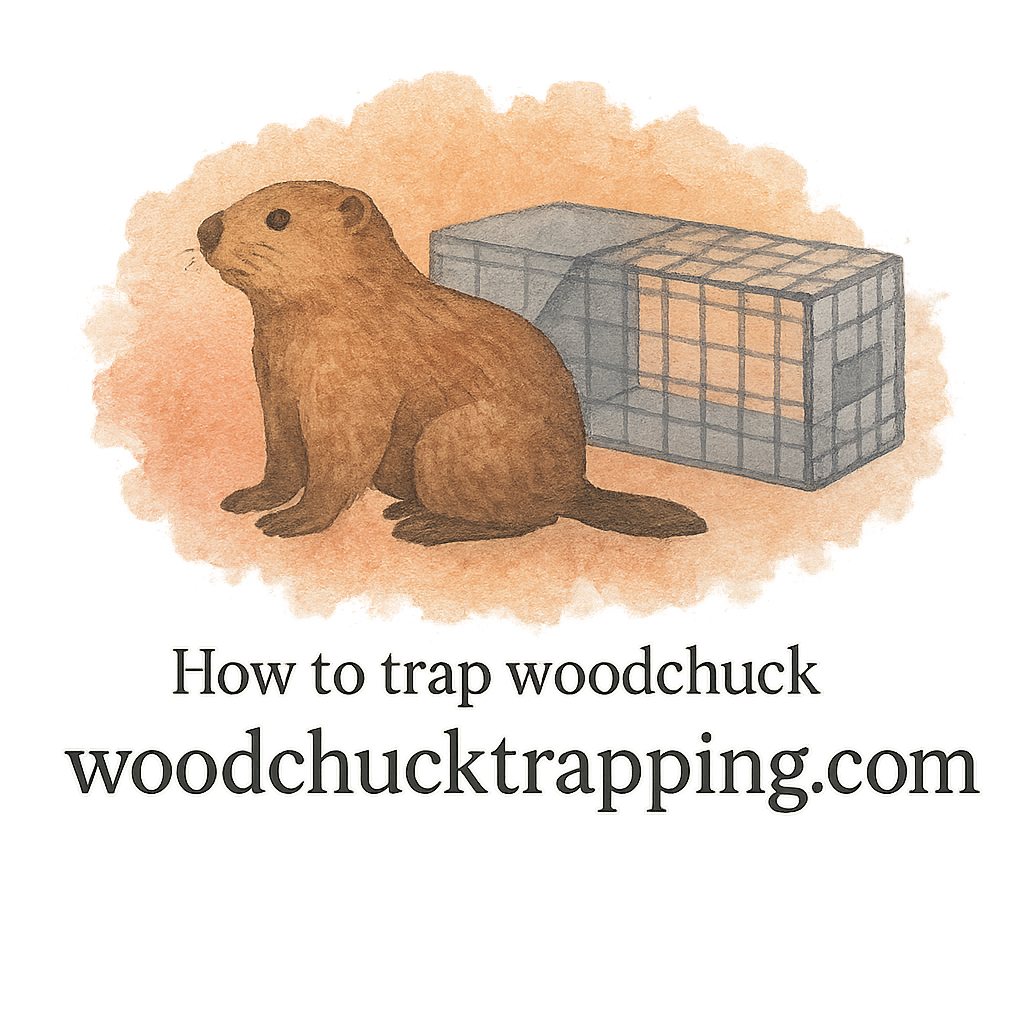If you’ve got holes in your yard, gnawed vegetables, or odd mounds of dirt cropping up, chances are you’ve got a woodchuck problem. Don’t worry—you’re not alone, and better yet, you’re in the right place. In this guide, we’ll walk you through the 12 steps to set up a perfect woodchuck trap—from identifying signs of infestation to safely removing the critter and preventing future damage.
Understanding Woodchucks
Before diving into trapping, it’s important to understand the woodchuck (a.k.a. groundhog). These burrowing animals are notorious for tearing up lawns, digging elaborate tunnel systems, and munching through gardens like it’s an all-you-can-eat buffet.
They’re shy but determined. That’s why successful trapping requires a little strategy—and a lot of patience.
Why Trap Woodchucks?
Why bother? Because letting them hang around can lead to:
- Foundation damage from burrows
- Injuries to pets or kids from tripping on holes
- Destroyed landscaping and gardens
Trapping is often the most effective and humane way to address the issue. Explore more about ethical methods at Woodchuck Trapping Techniques.
Step 1: Identify Woodchuck Activity
You can’t trap what you don’t locate. So, your first job is to confirm that your uninvited guest is a woodchuck.
Signs of Infestation
- Fresh dirt mounds
- Bite marks on garden plants
- Droppings near burrows
- Daytime sightings
Explore more infestation signs here.
Locating Burrows
Woodchucks build their homes in well-hidden areas. Look near:
- Sheds or decks
- Garden fences
- Wooded edges
If you want to learn more about burrow behavior, check out the tag on woodchuck burrows.
Step 2: Know the Law
Every state has different laws on wildlife removal. Before setting your trap, make sure you’re not crossing any legal lines. Visit Laws and Safety for guidance.
Step 3: Choose the Right Trap
Choosing the right gear is crucial. Traps come in all shapes and sizes—but not all are suitable for woodchucks.
Compact Traps for Small Yards
If space is tight, go for a compact trap. These are ideal for minimal-space environments and still do the job well.
Humane Trapping Options
Prefer ethical solutions? There are several humane traps that capture without causing harm.
Read detailed reviews at Trapping Equipment Reviews.

Step 4: Select Ideal Trap Location
Place your trap along the path the woodchuck travels daily—usually between its burrow and your garden. Don’t just guess; look for worn grass trails or paw prints.
More on strategic setup at Trapping Techniques.
Step 5: Wear Gloves to Handle Equipment
Woodchucks are scent-sensitive. Touching the trap bare-handed leaves behind human scent, making them wary. Always use trapping gloves.
Step 6: Clean and Prepare the Trap
Before baiting, wash your trap with unscented soap. This removes any lingering odors from the factory or previous uses.
Explore tips on trap scent control at Trap Scent.
Step 7: Use Effective Lures and Baits
Now we’re talking! Bait is what draws them in. You want it irresistible.
Scent Baiting Strategy
Use fruit like cantaloupe or vegetables like lettuce. Drizzle a bit of vanilla extract to enhance the scent trail.
Visit our full Baiting & Luring Guide for expert advice.
Recommended Lure Types
Use a combo of:
- Fresh vegetables
- Sweet fruits
- Commercial lures
Also, don’t miss our insight on scent bait options.
Step 8: Set the Trap Correctly
Follow manufacturer instructions to ensure proper tension and trigger placement. Double-check the door latch.
Use guides from How to Trap for a visual walkthrough.
Step 9: Monitor the Trap Frequently
Check the trap at least twice a day. A trapped animal left too long becomes distressed, which is both inhumane and often illegal.
Keep tabs on your setup, especially in hot weather.
Step 10: Safely Handle Trapped Animals
Caught one? Great! Now what?
- Put on heavy-duty gloves
- Drape a towel over the trap to calm the animal
- Move slowly—don’t shake or jostle
Safety first! Check out safety guidelines.
Step 11: Relocate or Dispatch
Depending on local laws, you may be able to release the woodchuck a few miles away or contact animal control for humane euthanasia.
Want to do it yourself? Learn about trapped animal handling procedures.
Step 12: Prevent Future Damage
Trapping is only half the battle. If your yard stays attractive to woodchucks, others will come.
Tips for Prevention:
- Seal up old burrows
- Install fencing 12 inches below ground
- Keep garden tidy
More on damage prevention strategies available now.
Also explore topics on minimal space and yard damage.
Conclusion
There you have it—12 steps to set up a perfect woodchuck trap. From scouting the burrow to choosing the right bait and checking your trap daily, every detail counts.
With the right tools, a bit of know-how, and these pro tips, you’ll reclaim your yard in no time. For more tools and tips, check out Woodchuck Trapping and explore everything from trap gear to trapping essentials.
FAQs
1. What is the best bait for woodchuck traps?
Cantaloupe, lettuce, and apples work great. Add vanilla or peanut butter for extra scent appeal.
2. How do I find a woodchuck’s burrow?
Look for fresh dirt mounds, low-lying holes near decks or fences, and gnawed vegetation.
3. Are woodchuck traps safe for pets?
Use compact or enclosed traps to prevent accidental captures. Always monitor traps closely.
4. Can I trap woodchucks legally?
It depends on your state laws. Check with your local wildlife department or laws and safety section.
5. What time of day is best to trap woodchucks?
Early morning or late afternoon—they’re diurnal and most active then.
6. Do woodchucks come back after relocation?
Not usually, if relocated at least 5 miles away. But new ones may take their place if the area remains attractive.
7. What should I do with an empty burrow?
Collapse and fill it in. Use gravel and soil, and consider fencing to block new entries.


